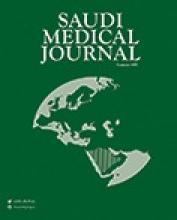REVIEW ARTICLE
The process of litigation for medical errors in Saudi Arabia and the United Kingdom
Alkhenizan & Shafiq compare the process of litigation of medical errors in Saudi Arabia and the United Kingdom and to draw conclusions and recommendations for both legal systems based on this comparison. They conclude that rates of medical errors is increasing in both countries. Surgical specialties is the main source of litigated potential medical errors in both legal systems. The UK complaint management system emphasizes on the role of mediation and conciliation in the early and late stages of complaint and litigation. Mediation and conciliation is an essential part of the NHS Resolution procedures in handling claims involving potential medical errors. The Saudi system does not include formal procedures for the mediation and conciliation of potential medical errors, however mediation and conciliation are probably conducted in an informal way. A culture of litigation and compensation is growing in UK which is not yet the case in Saudi Arabia. The cost of medical claims and awarded compensations are much more in UK compared to Saudi Arabia. The growing overall cost of malpractice litigation in UK is threatening the health care system in the country. Malpractice insurance in Saudi Arabia is mandatory for dentists and physicians only. Unlike the UK, vicarious liability is applied in Saudi Arabia on allied health professionals including non-healthcare workers, but not on physicians. In general, claims of potential medical errors take longer time to reach the final verdict in Saudi Arabia compared to UK.
see page 1075
ORIGINAL ARTICLES
AuraGain™ and i-Gel® laryngeal masks in general anesthesia for laparoscopic cholecystectomy. Performance characteristics and effects on hemodynamics
Sabuncu et al conclude that both AuraGain and i-Gel® supraglottic airway devices (SADs) are comparable with endotracheal tube (ETT) used for airway control in general anesthesia for laparascopic cholecystectomy (LC), regarding application ease and perioperative complications. Favorable hemodynamic responses to AuraGain and i-Gel® SADs may put them in a better place than ETT. The trial was completed with 105 patients. Ease of insertion for SADs which was evaluated with insertion procedure duration, attempts, first insertion success rates, and oropharyngeal leak pressures were similar between the groups. Heart rate, systolic and diastolic arterial pressures, and peak airway pressures were significantly lower in the AuraGain and i-Gel® groups, compared with the ETT, p<0.017.
Mean systolic and diastolic arterial pressure alteration graph of the patients in groups AuraGain, i-Gel® and ETT.
see page 1082
Natural cycle versus hormone replacement therapy cycle in frozen-thawed embryo transfer
Kalem et al conclude that no difference between the implantation rate, clinical pregnancy rate or live birth rate between the natural cycle group and hormone replacement therapy (HRT) cycle group. These results may provide clinicians with more freedom to individualize patient treatment, particularly with respect to the selection of the endometrial preparation method, if these results are supported by large randomized controlled studies in the future. A total of 144 embryos were transferred in 108 natural cycles and 357 embryos were transferred in 224 HRT cycles. No statistically significant differences were found in the implantation rate (p=0.796), clinical pregnancy rate per cycle (p=0.900), clinical pregnancy rate per transferred embryo (p=0.283), live birth rate per cycle (p=0.821), or live birth rate per transferred embryo (p=0.481) between the 2 groups.
see page 1102
Knowledge, attitudes, and practices of emergency department staff towards disaster and emergency preparedness at tertiary health care hospital in central Saudi Arabia
Nofal et al assess the knowledge, practices, and attitudes regarding disaster and emergency preparedness among Emergency Department (ED) staff. A 189 participants have completed the questionnaire. Two-third of the participants were below 30 years, and more than 85% were female. One hundred and eleven (58.7%) had a clinical experience of more than 5 years, while 78 (41.3%) participants had more than 3 years of clinical service at the Tertiary care hospital in Riyadh, Kingdom of Saudi Arabia. Correct responses of knowledge towards disaster and emergency preparedness score was 6.2±2.5. Participants with more than 5-years of experience had a statistically significant (p=0.009) knowledge scale score for disaster and emergency preparedness. Overall, 186 (98.4%) patients believed that training is necessary for all healthcare workers. Approximately 153 (81%) participants reported the conduct of disaster drill at their hospital. The mean score (Mean±SD) for the overall familiarity of the study participants with emergency preparedness information questionnaire (EPIQ) scale was 3.2±1.3.
see page 1123
- Copyright: © Saudi Medical Journal
This is an open-access article distributed under the terms of the Creative Commons Attribution-Noncommercial-Share Alike 3.0 Unported, which permits unrestricted use, distribution, and reproduction in any medium, provided the original work is properly cited.







